The coastal brown bears of Alaska’s Katmai National Park
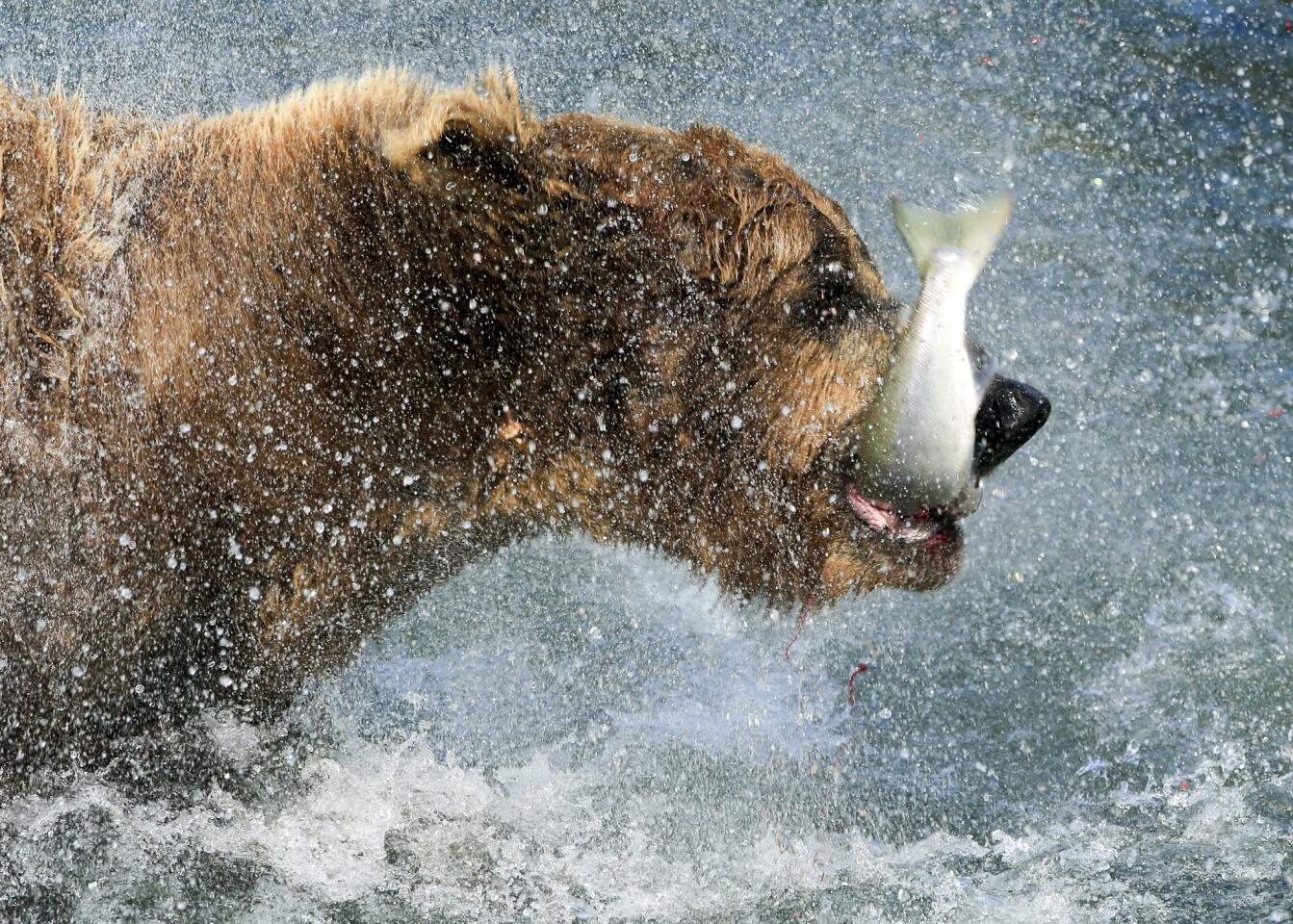
A coastal brown bear shakes the water from his fur while he carries a sockeye salmon out of the water. Each bear is likely to consume about 20 of the high calorie salmon per day to prepare for their long hibernation. (Mark Boster / Los Angeles Times)
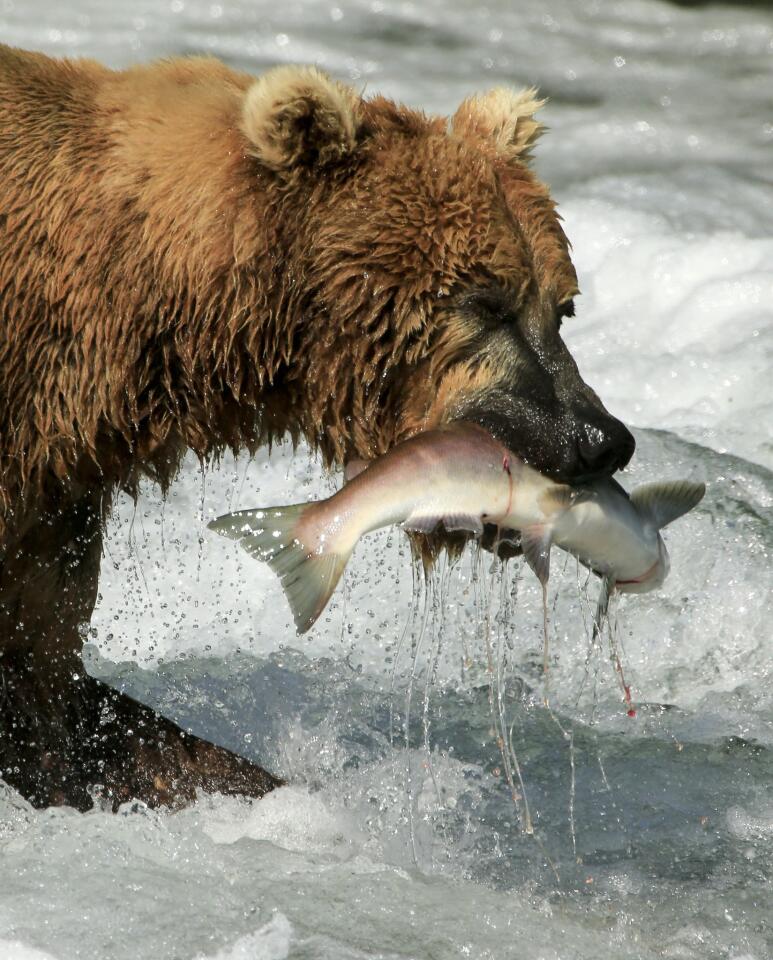
A bear carries a sockeye salmon in shallow water next to Brooks Falls in Alaska’s Katmai National Park and Preserve. (Mark Boster / Los Angeles Times)
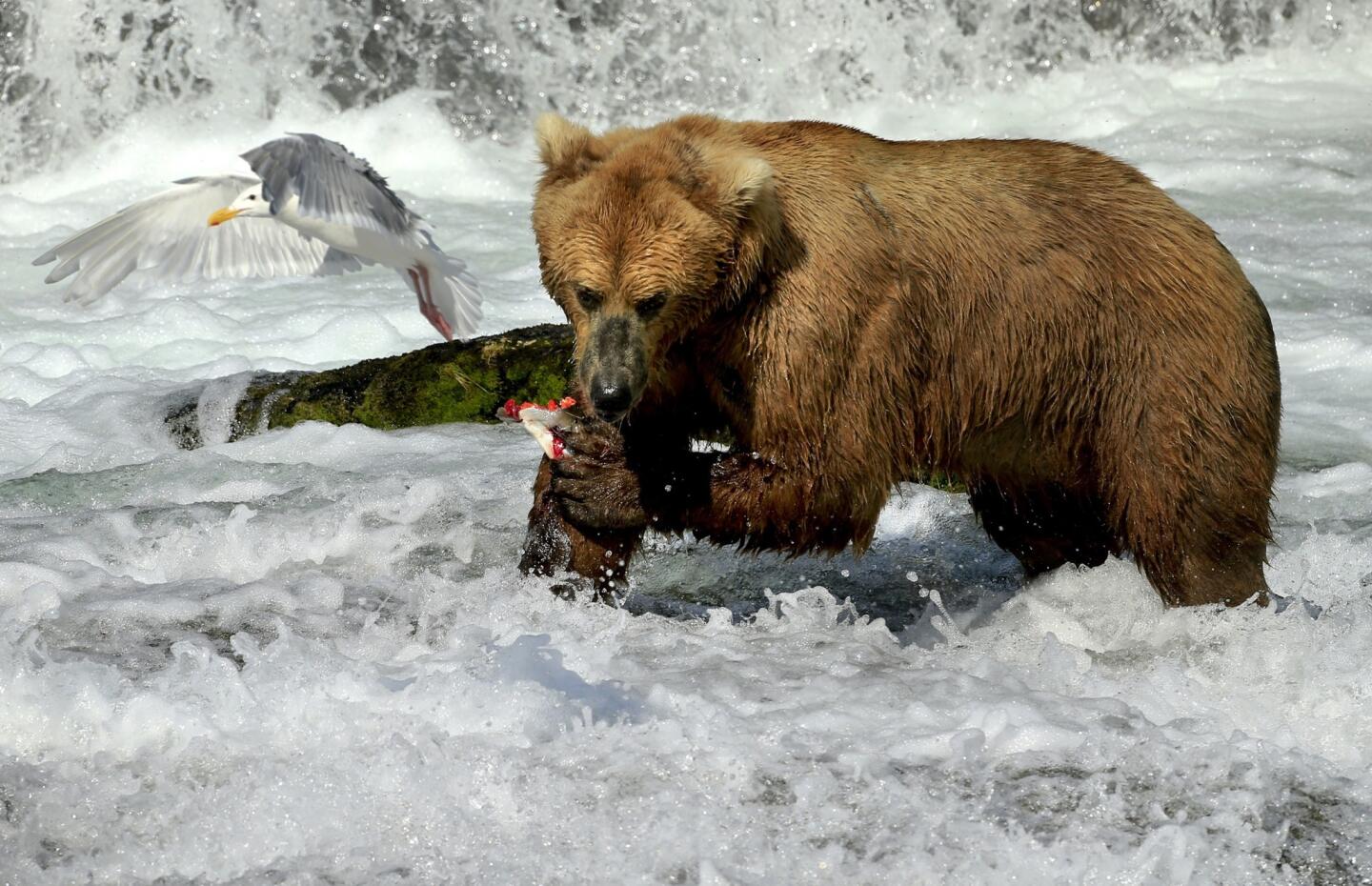
A bear eats a sockeye salmon in shallow water while a gull looks for leftovers. (Mark Boster / Los Angeles Times)
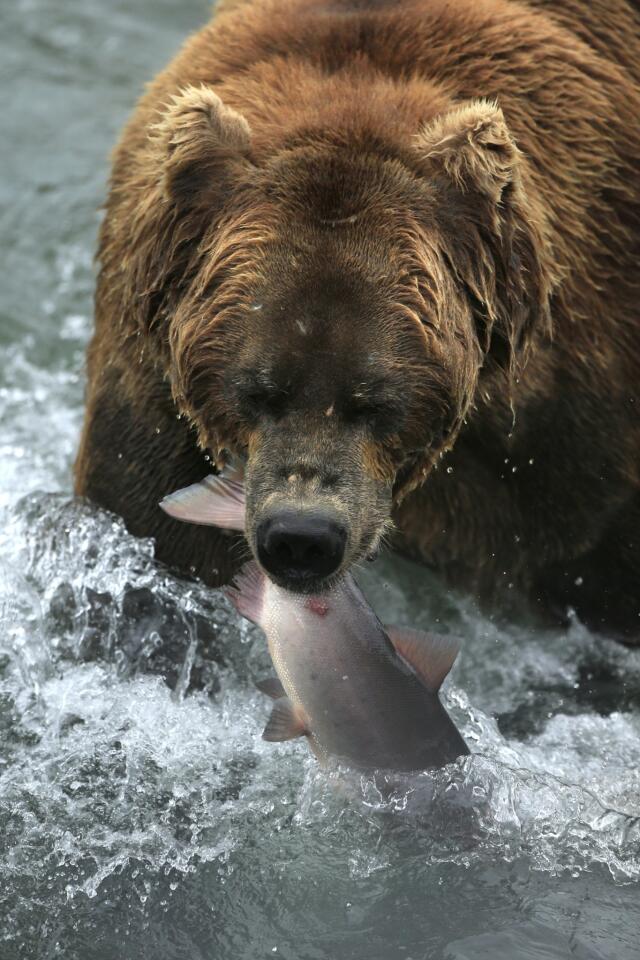
Another bear carries a sockeye salmon out of the water. (Mark Boster / Los Angeles Times)
Advertisement
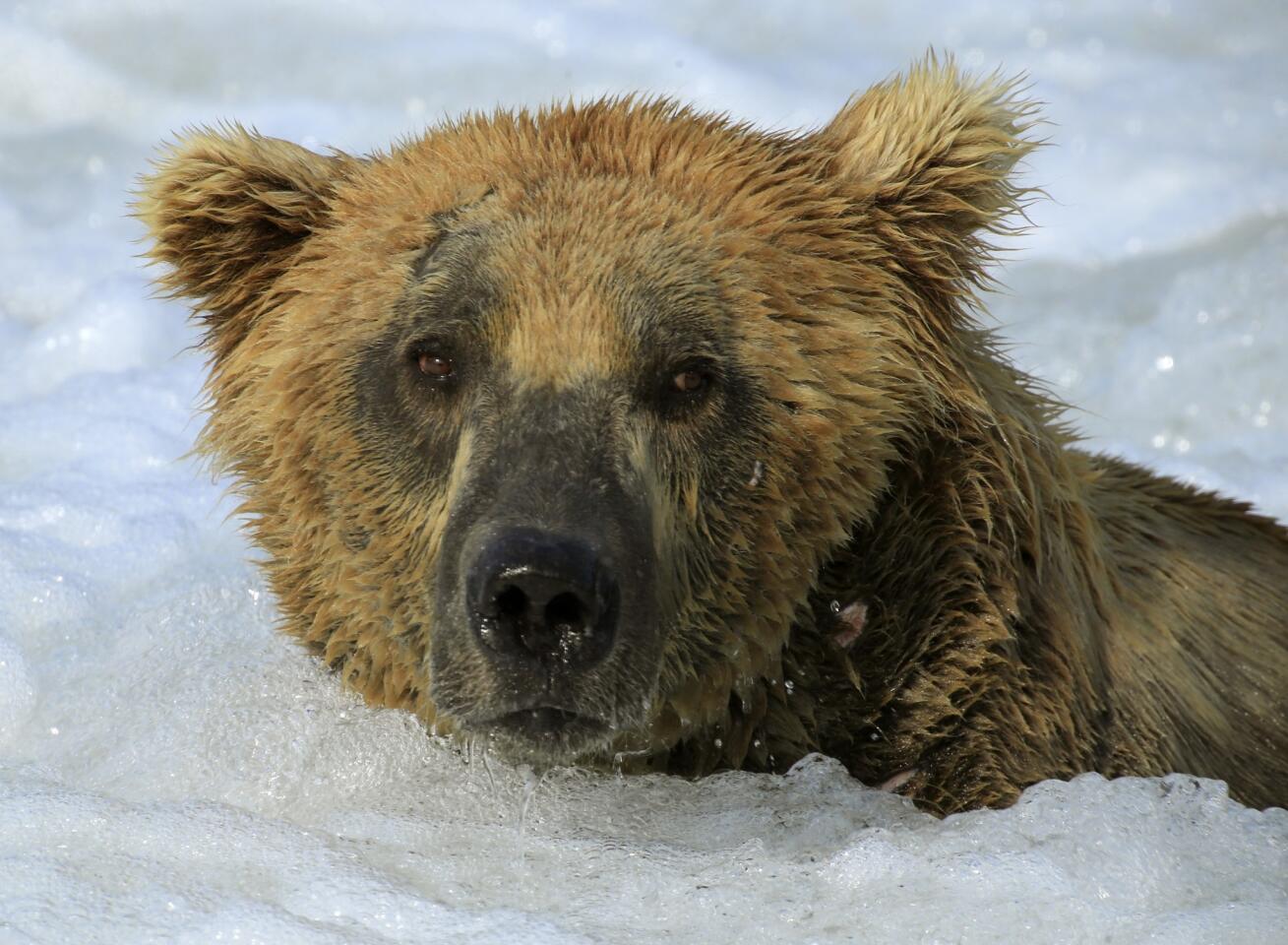
A bear swims in the shallow water, looking for salmon. (Mark Boster / Los Angeles Times)
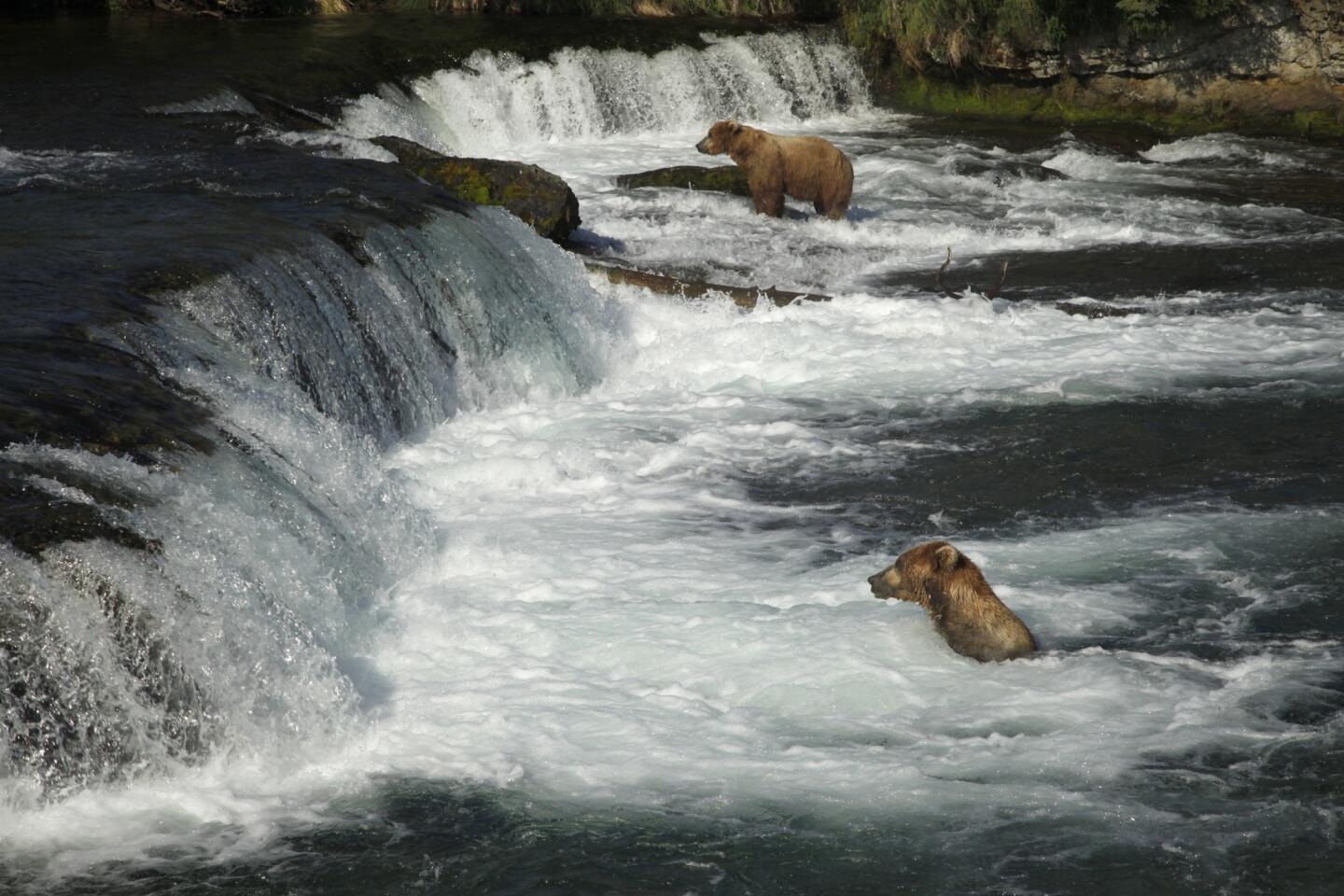
Brooks Falls at Brooks Camp is one of the state’s most famous viewing spots for the coastal brown bear. Here, two bears wait for salmon to swim by at the falls. (Mark Boster / Los Angeles Times)
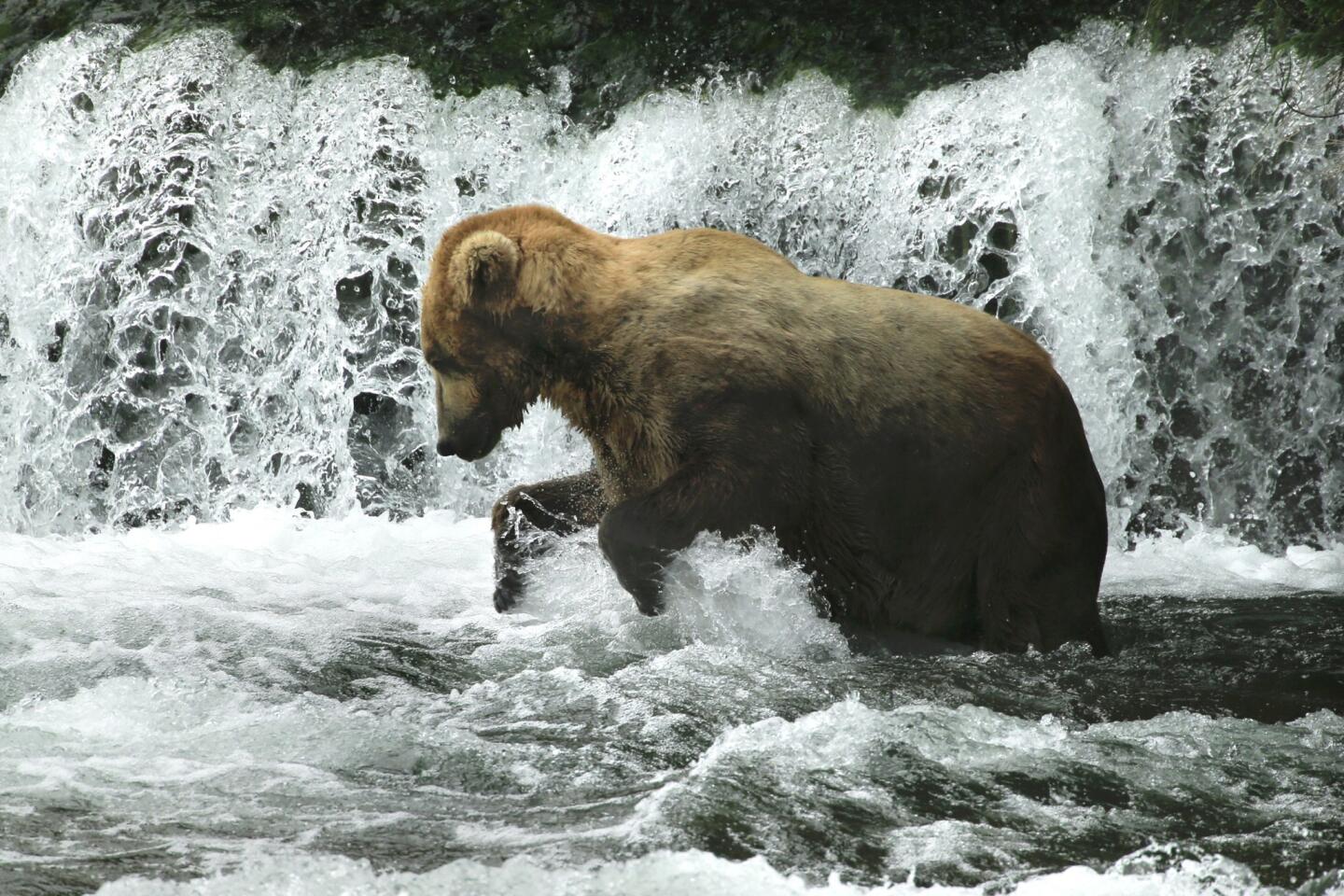
Some of the older, more dominant bears in the group often fish for salmon by sitting in pools, waiting for them to brush up against a leg or foot, then scooping their prey with their sharp claws. (Mark Boster / Los Angeles Times)
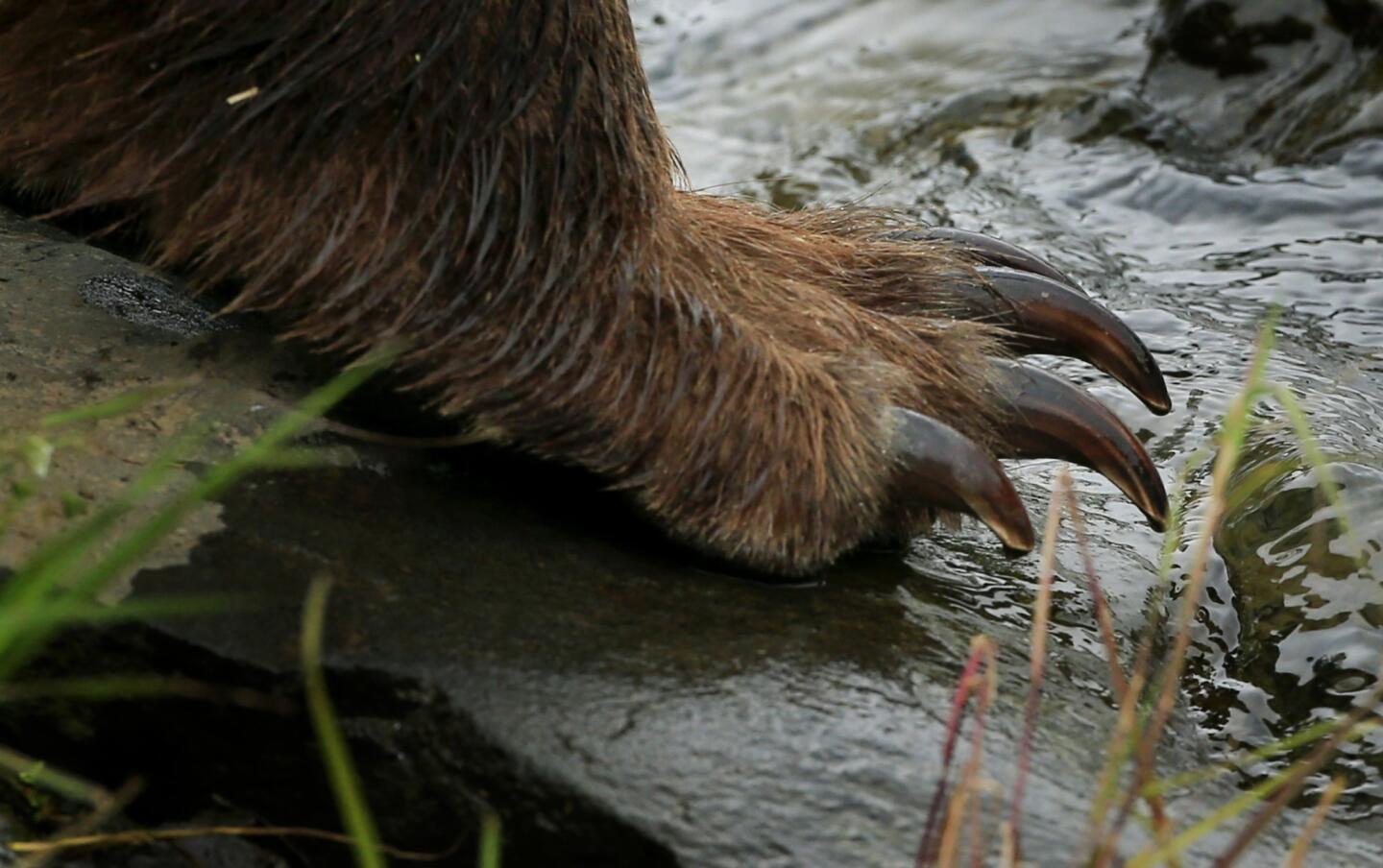
At Brooks Falls one can clearly see that a coastal brown bear’s claws are well designed for catching fish, digging for roots and defense. (Mark Boster / Los Angeles Times)
Advertisement
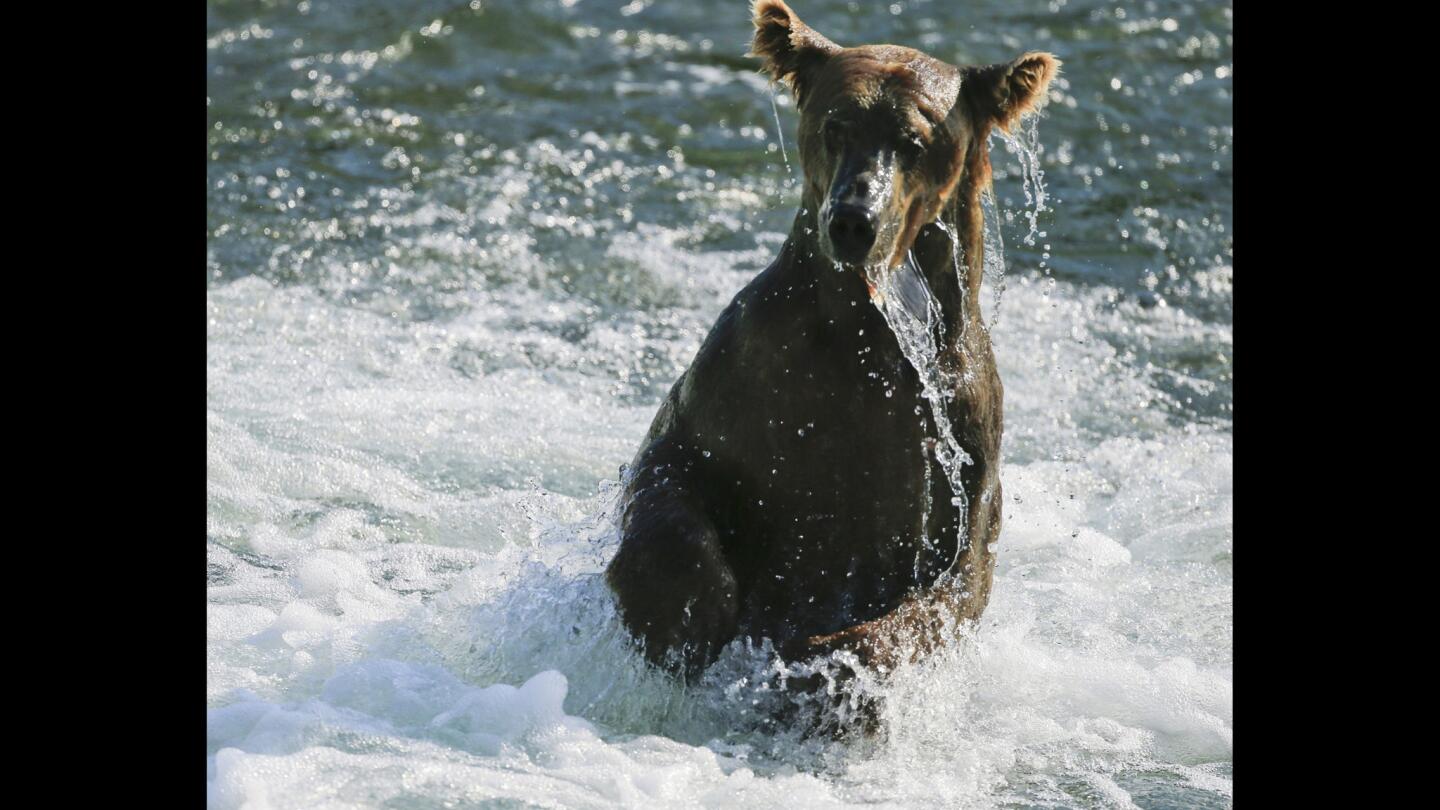
A bear emerges from the waters at Brooks Falls. (Mark Boster / Los Angeles Times)
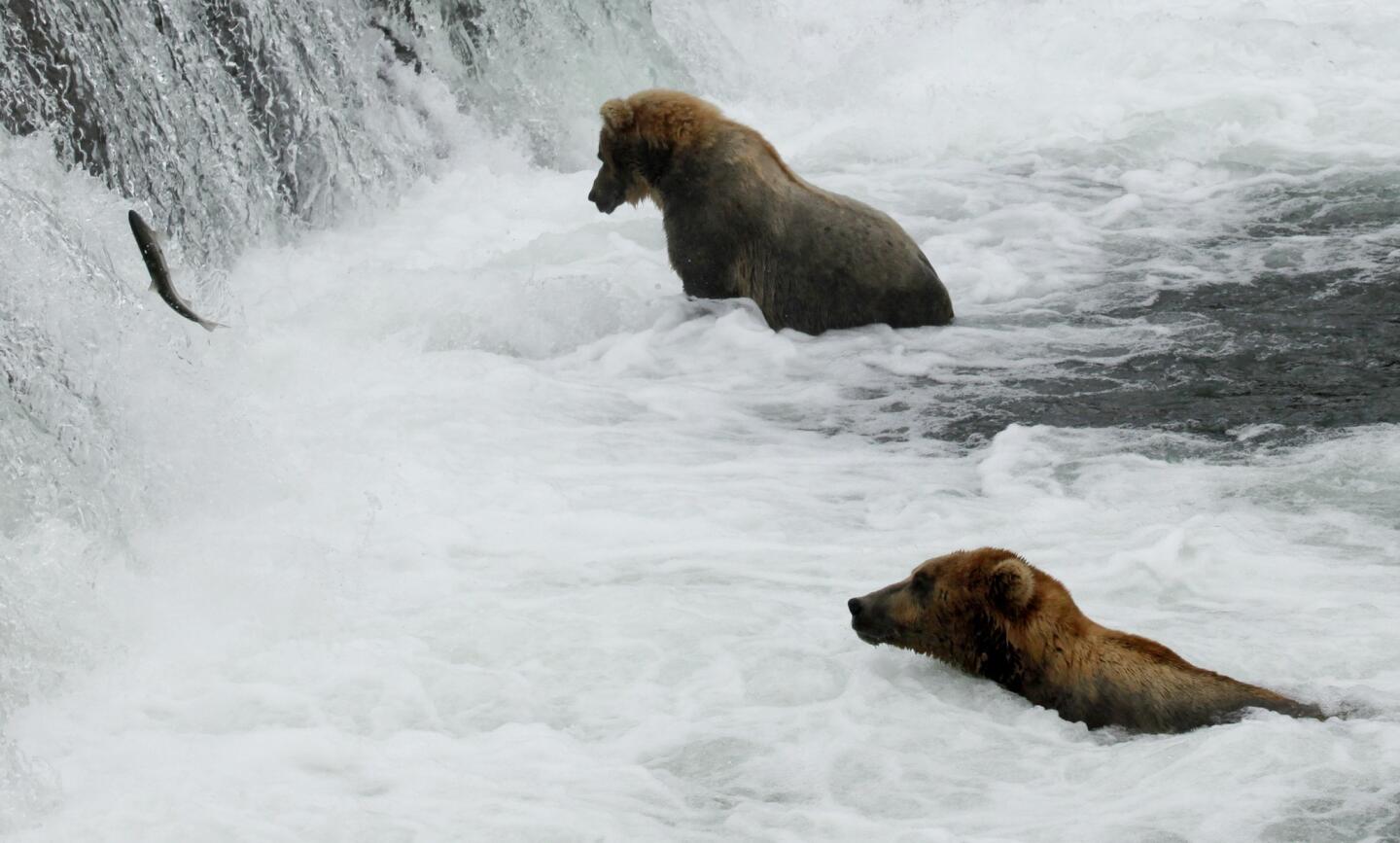
Two bears watch a sockeye salmon leap out of the water at Brooks Falls. (Mark Boster / Los Angeles Times)
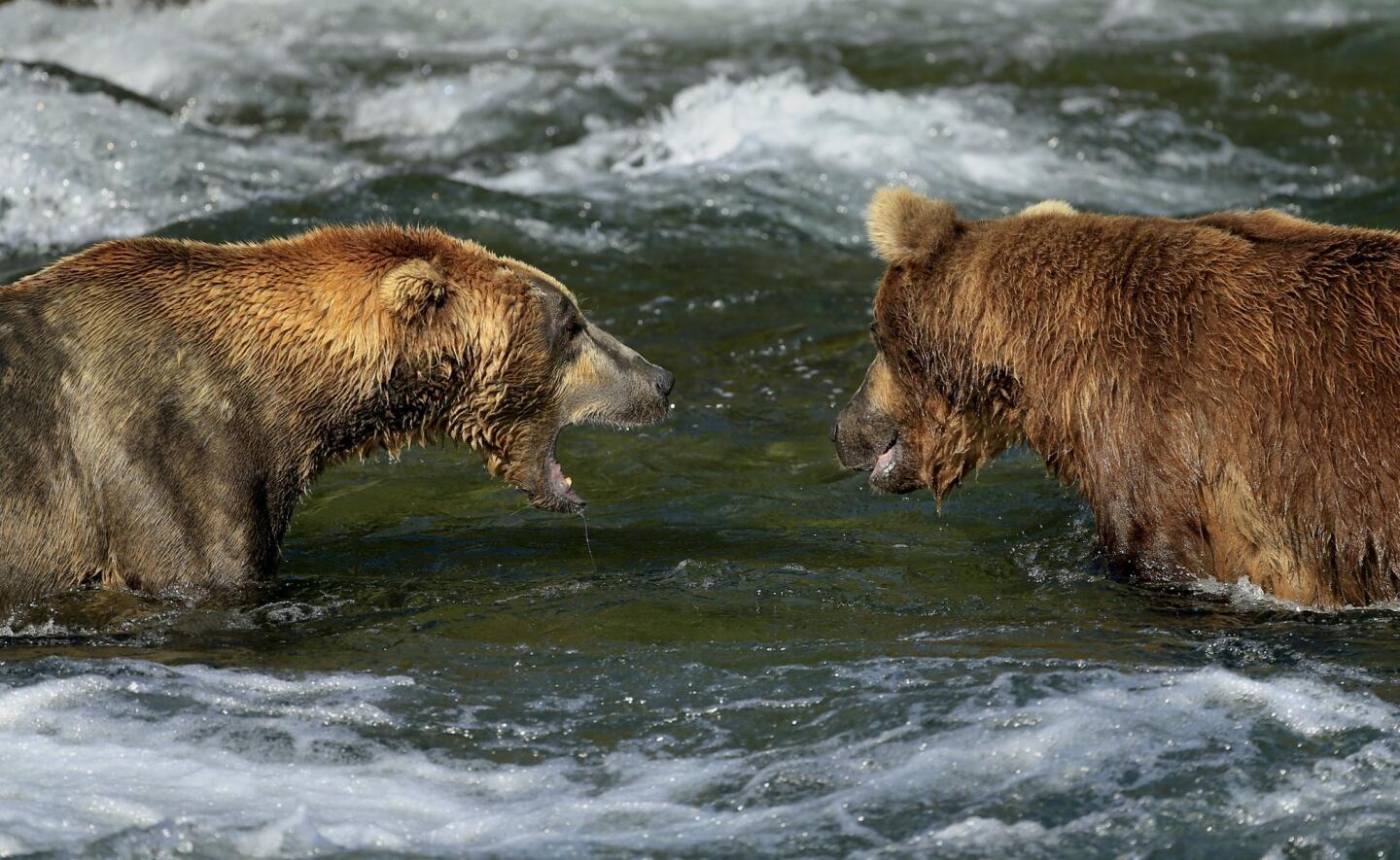
Two younger bears get into a minor argument. (Mark Boster / Los Angeles Times)
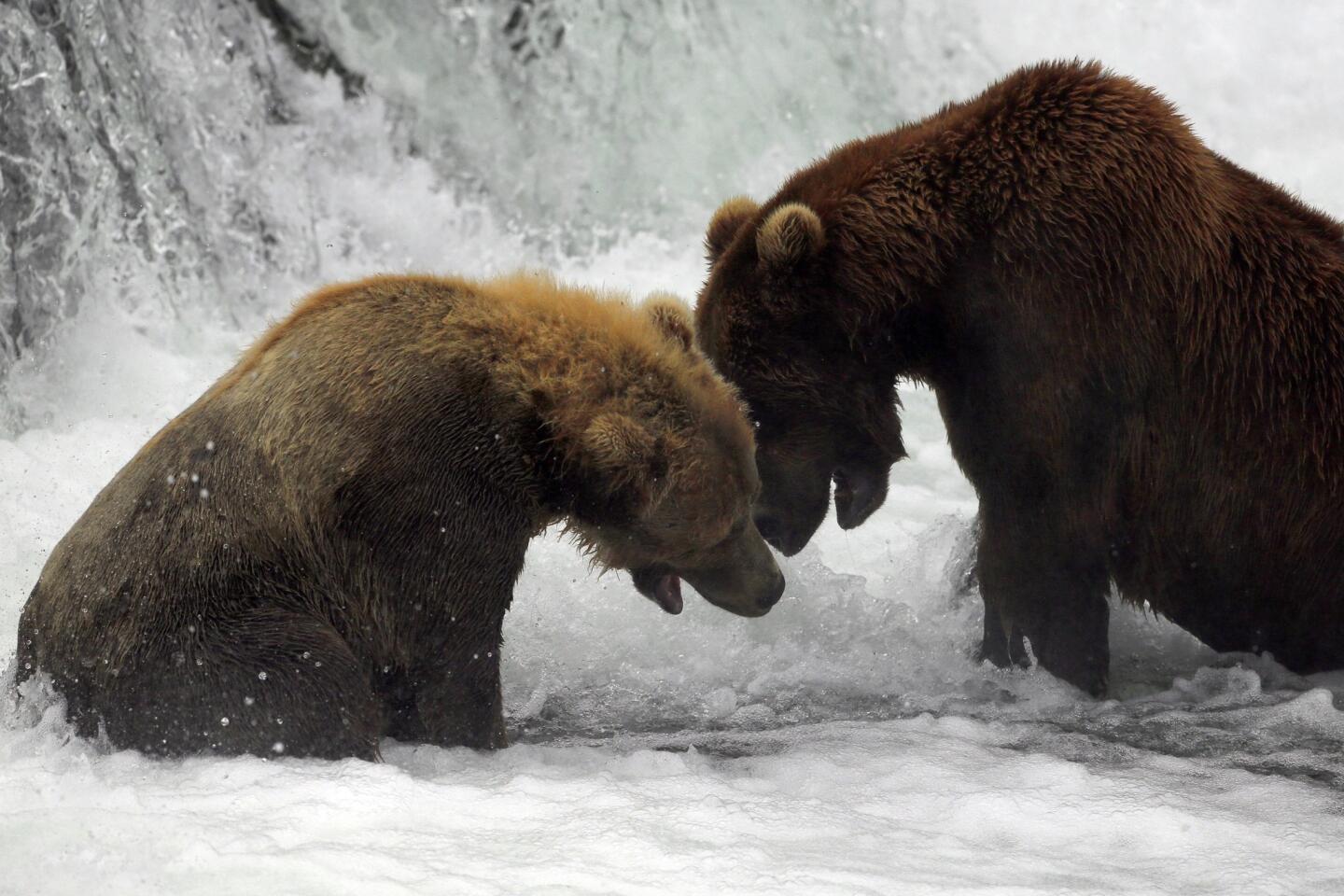
A couple of the larger, more dominant bears begin to battle by bumping heads while standing in the shallow waters at Brooks Falls. (Mark Boster / Los Angeles Times)
Advertisement
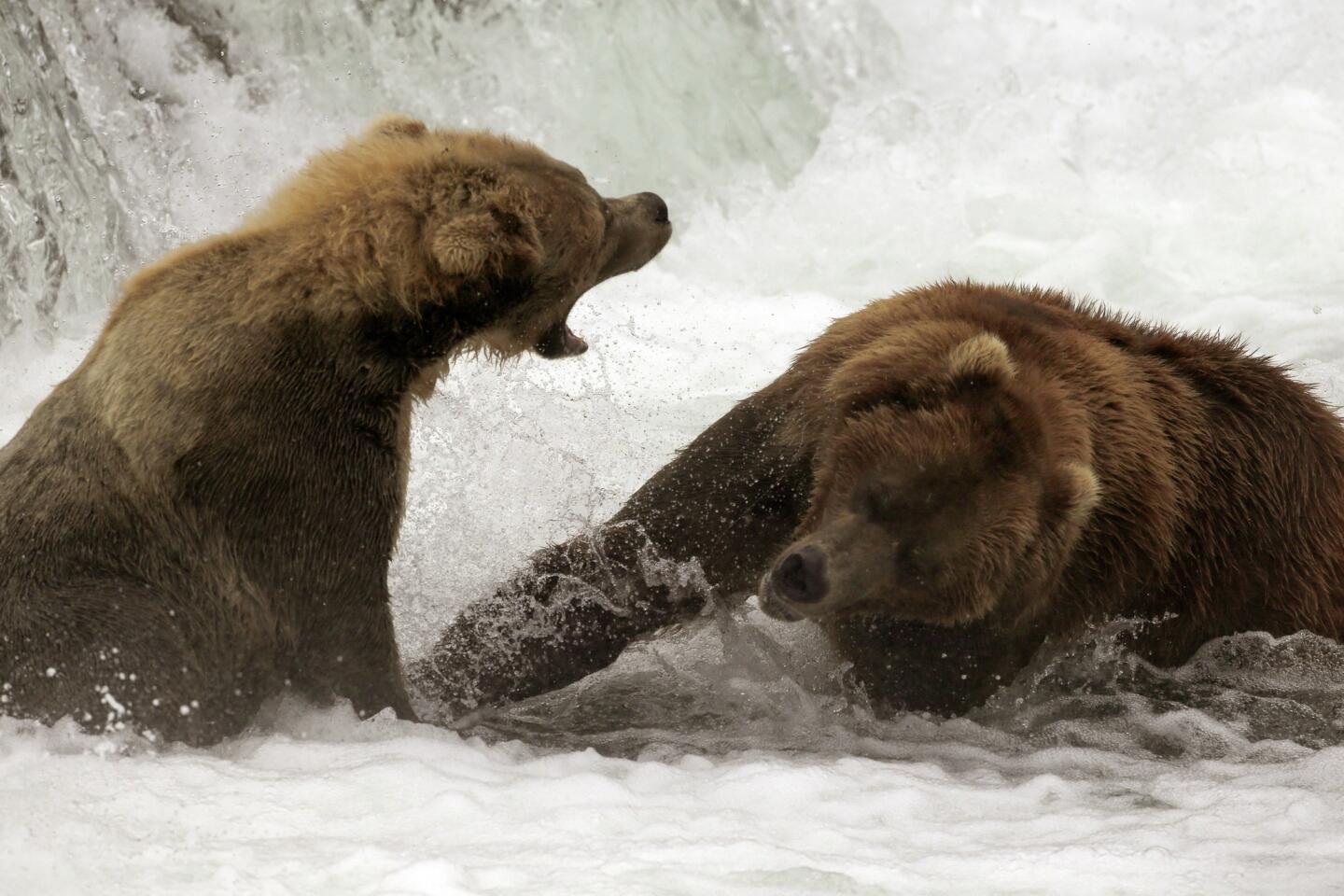
One of the bears takes a swipe at the other. (Mark Boster / Los Angeles Times)
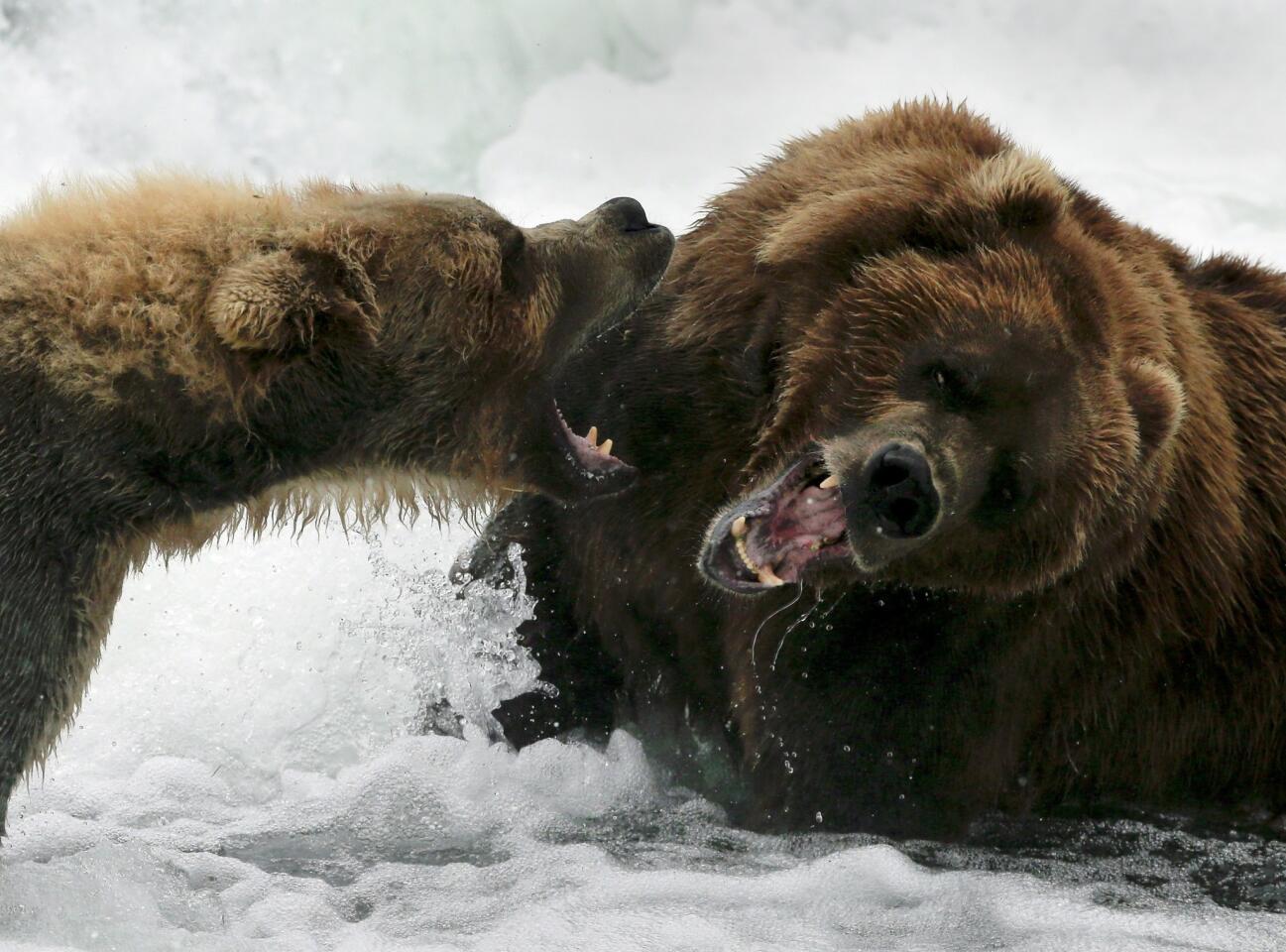
Park rangers say that the momentary battles between the animals are usually caused by disputes over fishing rights. (Mark Boster / Los Angeles Times)
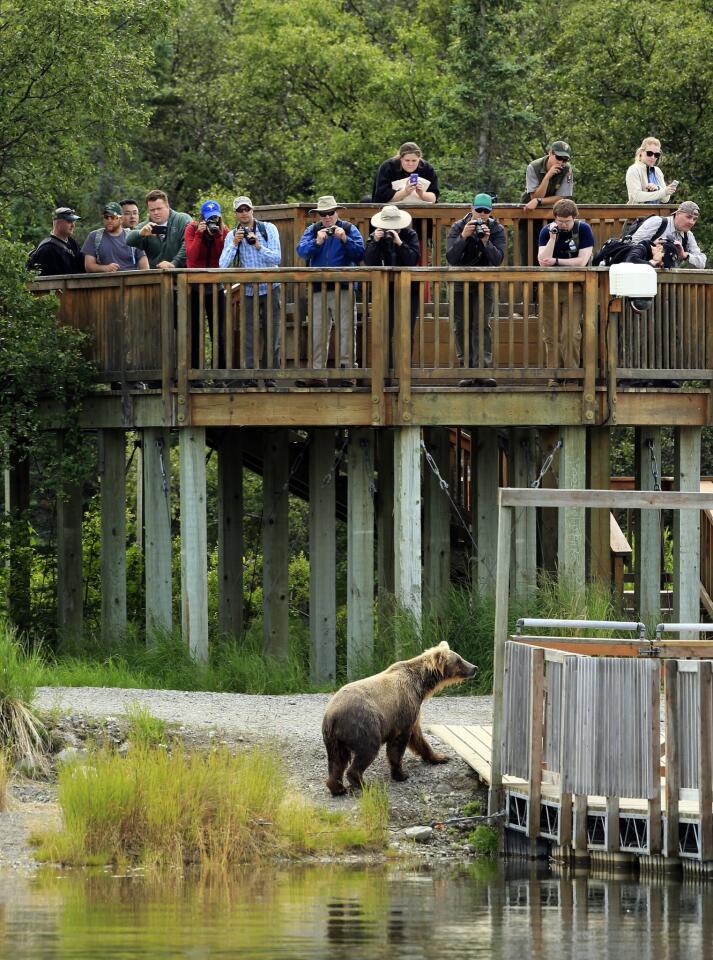
Visitors take everything in from the safety of raised platforms, like the Lower River Platform shown here. (Mark Boster / Los Angeles Times)
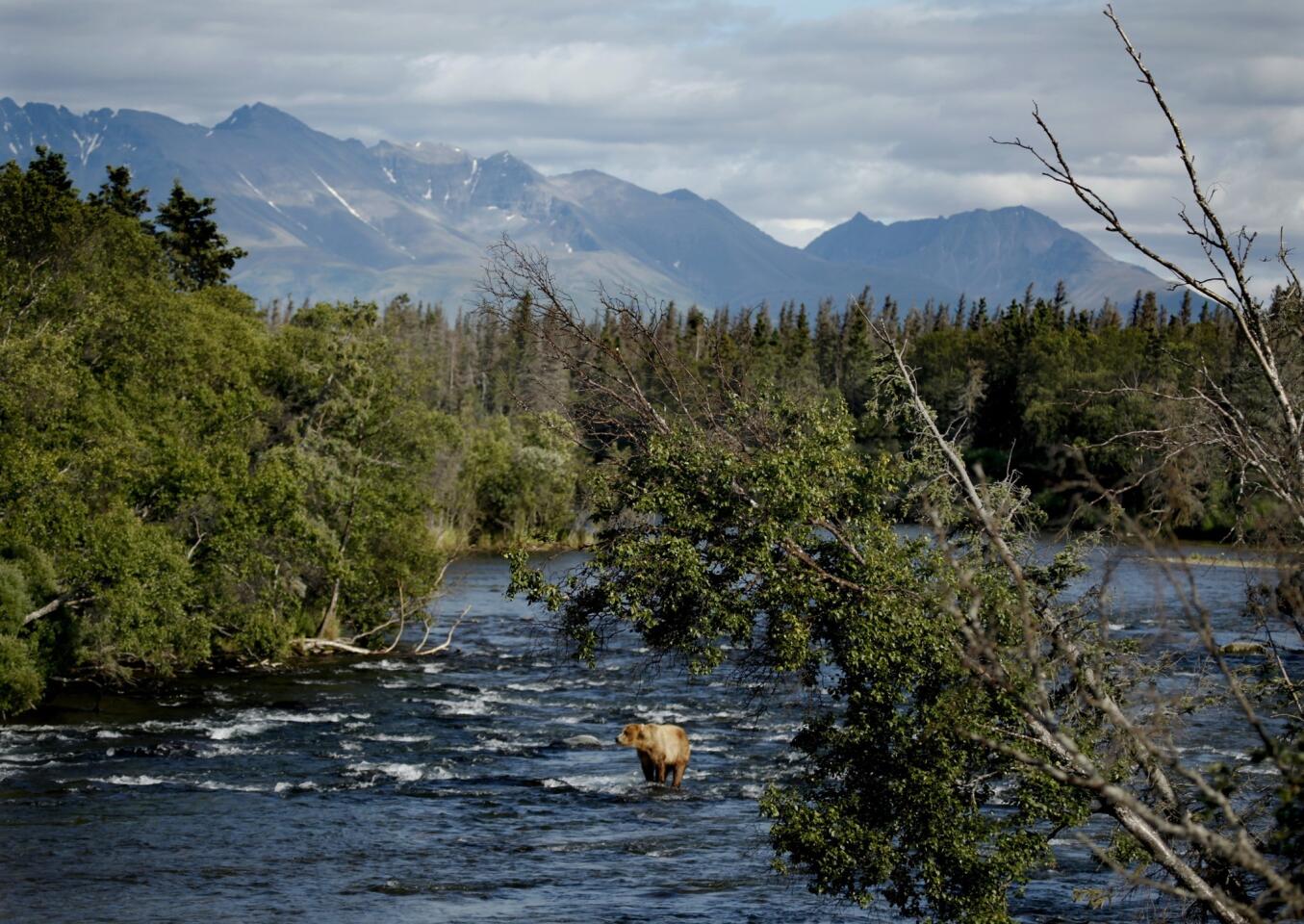
A bear makes its way up the Brooks River. (Mark Boster / Los Angeles Times)
Advertisement
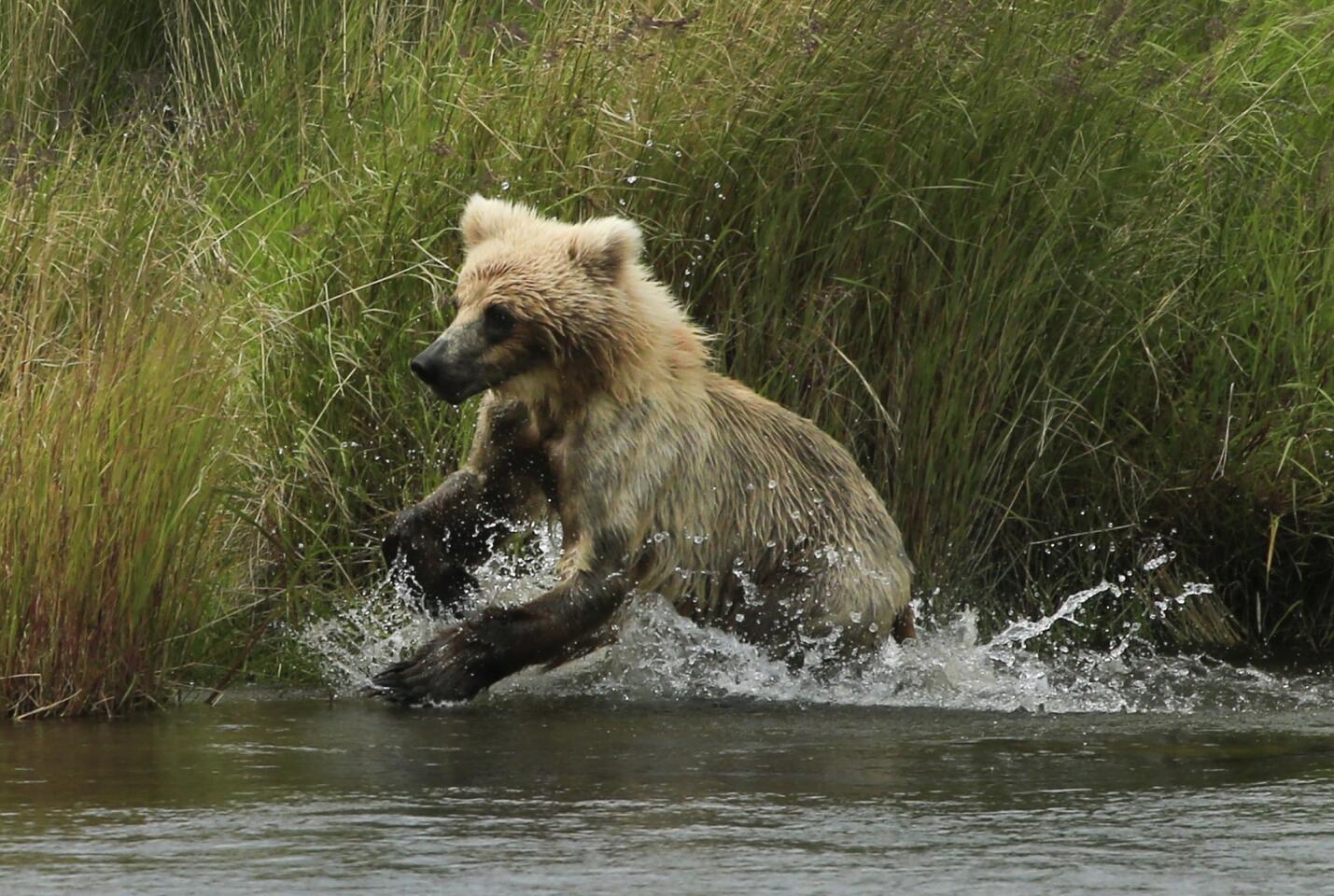
A young bear runs through the waters of Lower Brooks River. (Mark Boster / Los Angeles Times)
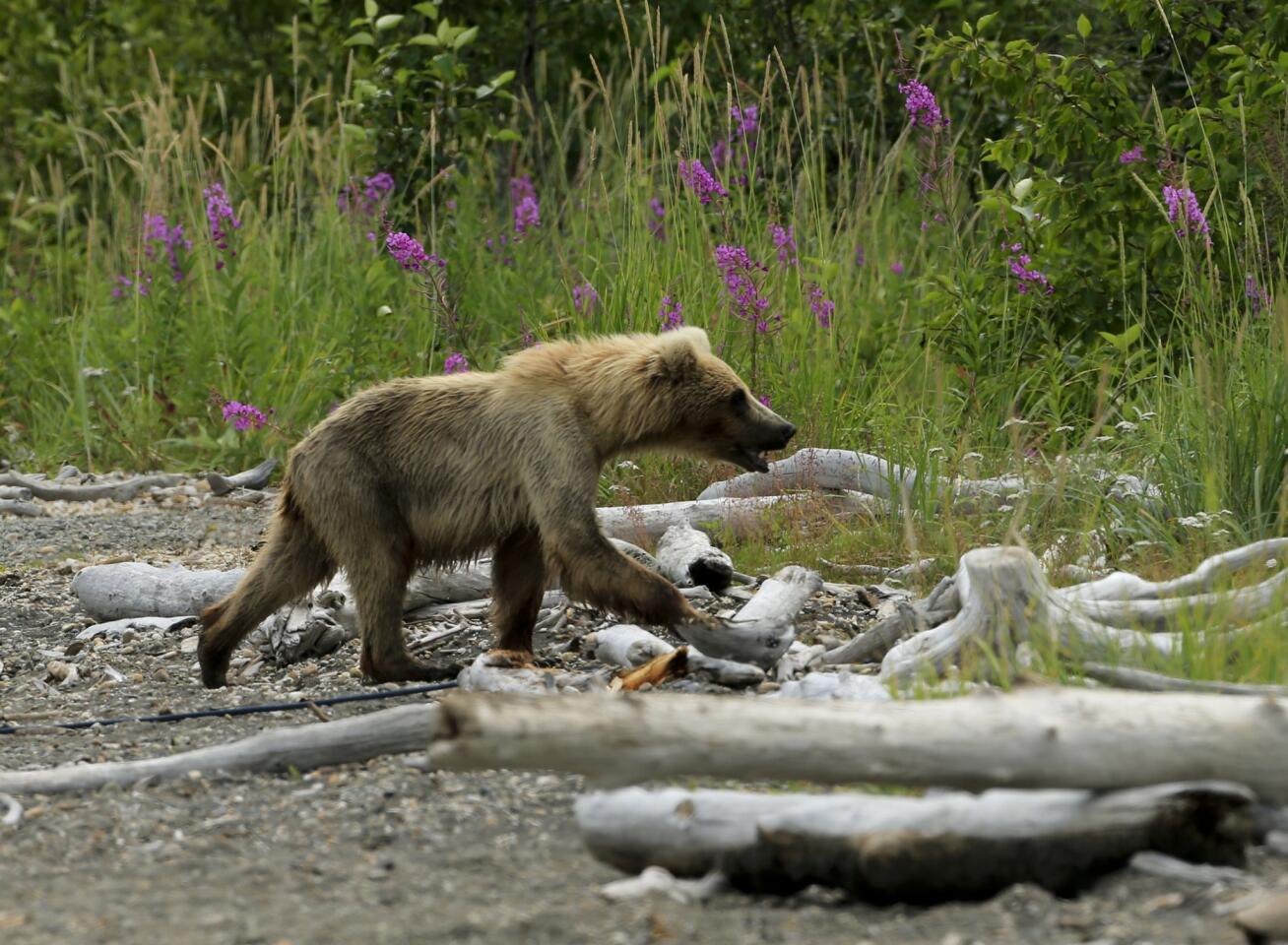
The bear leaves the beach at Naknek Lake and strolls toward Brooks Lodge. (Mark Boster / Los Angeles Times)
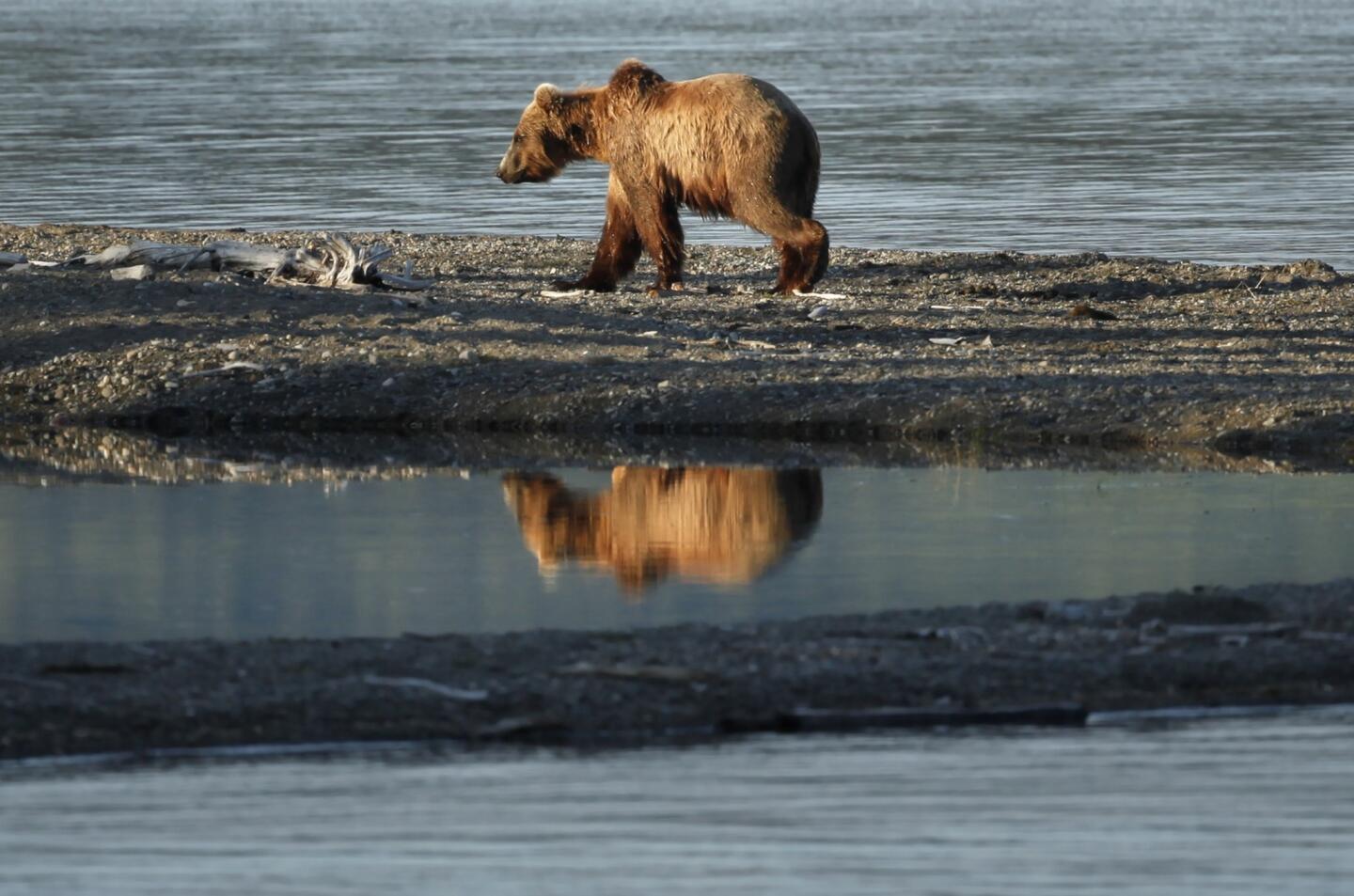
Another bear walks along the sandbar on the shore of Naknek Lake. (Mark Boster / Los Angeles Times)
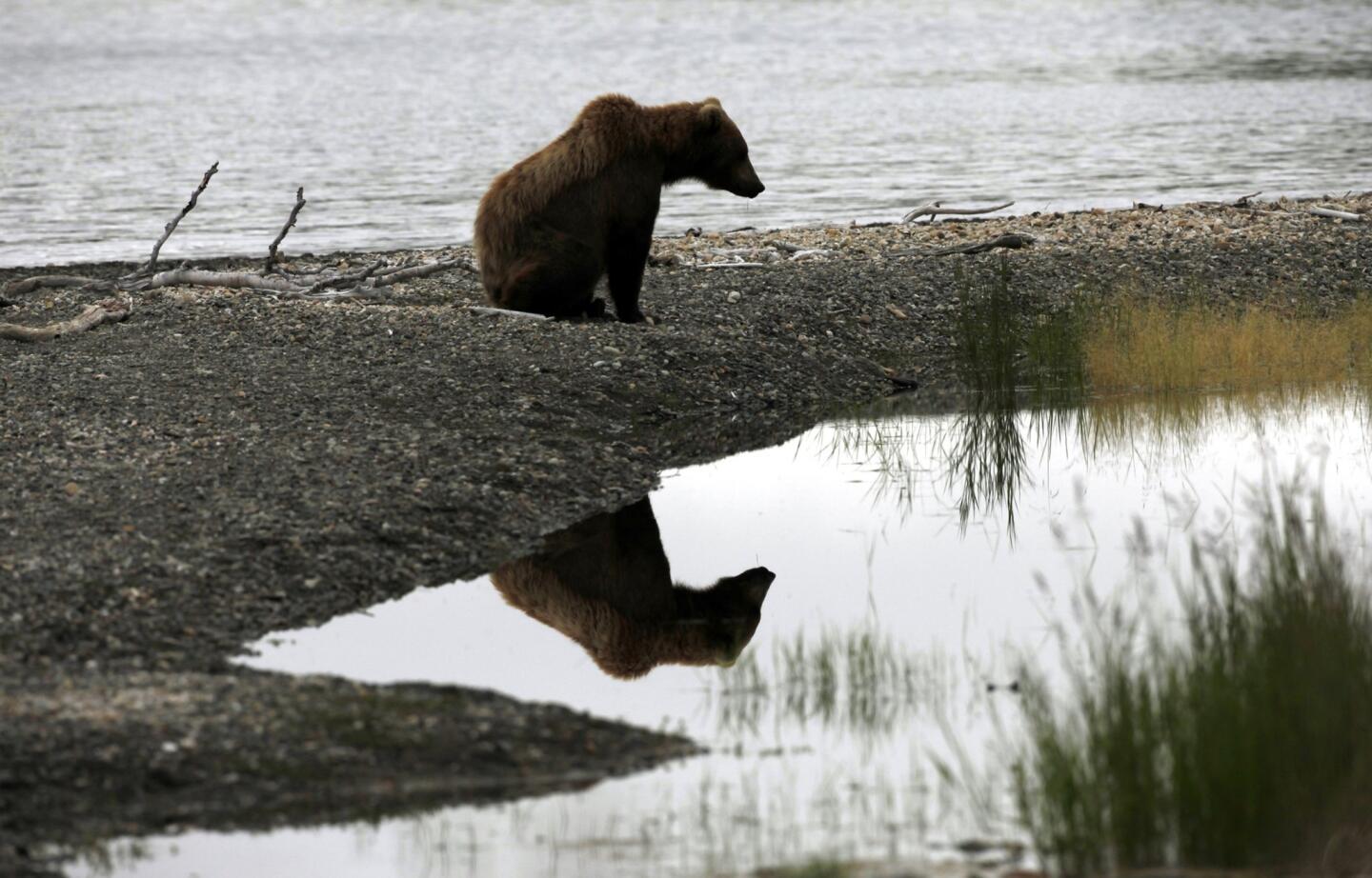
He sits down and watches his reflection near the mouth of the Brooks River and Naknek Lake. (Mark Boster / Los Angeles Times)
Advertisement
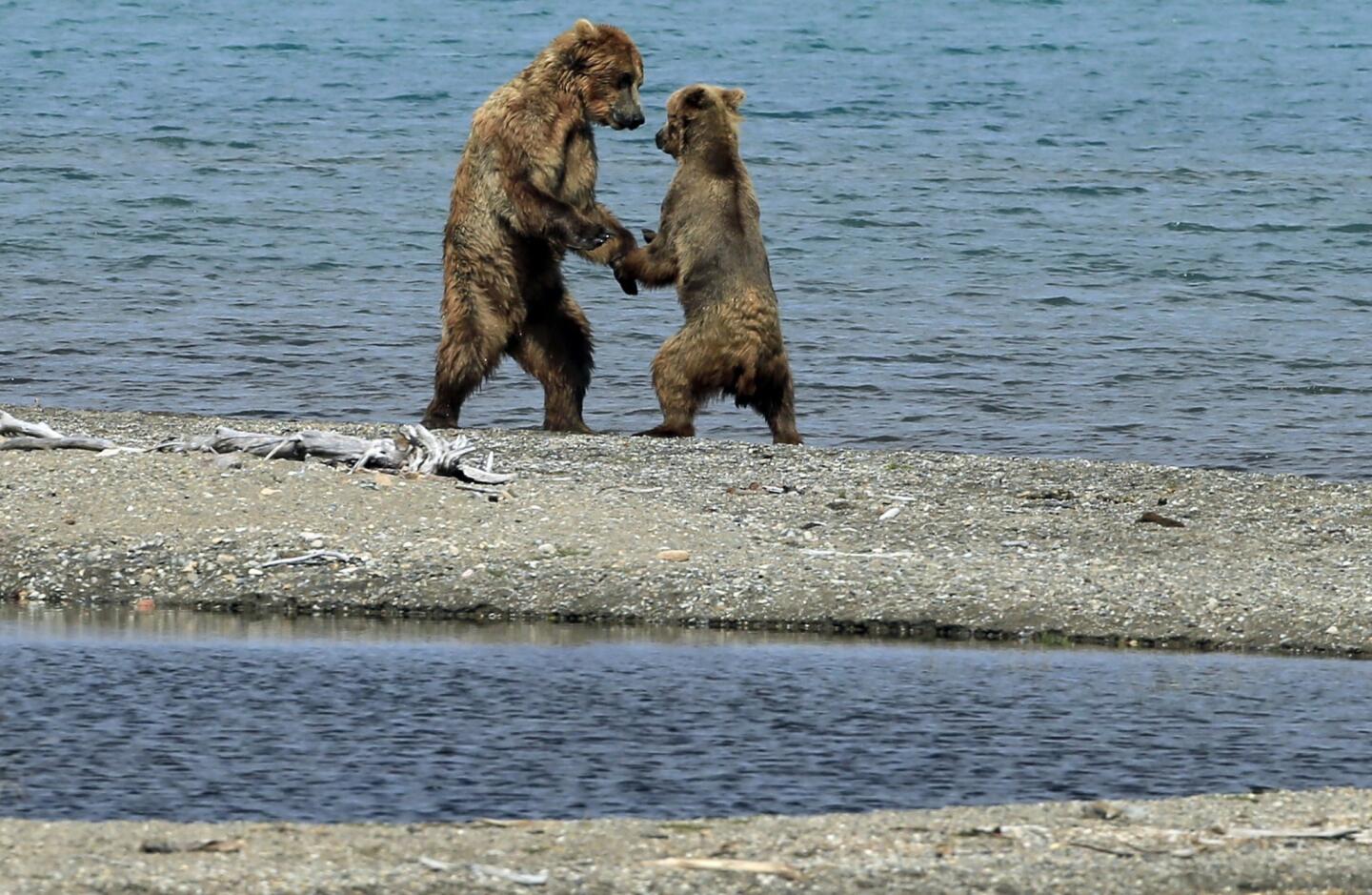
Two younger bears play near the sandbar on the shore of Naknek Lake. (Mark Boster / Los Angeles Times)
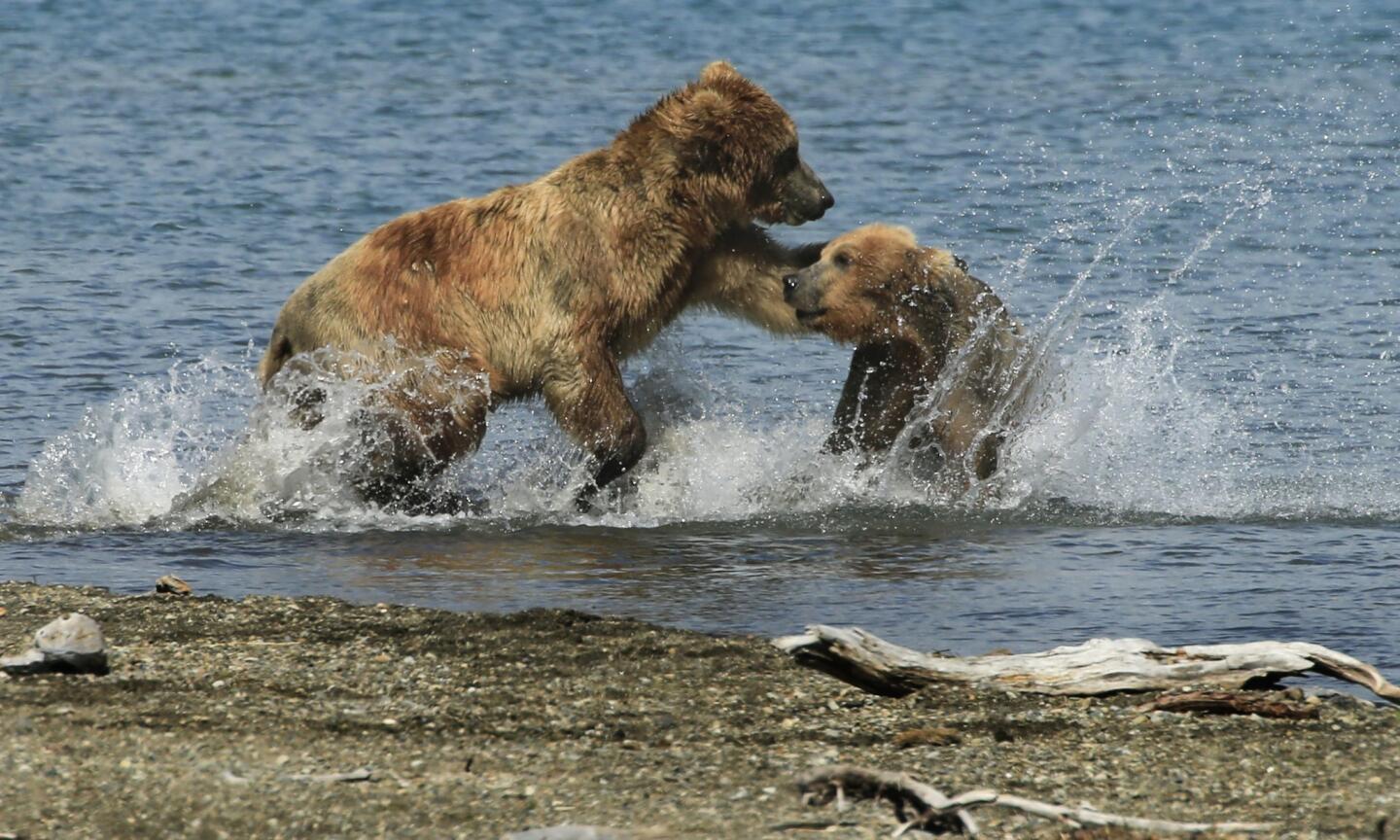
They take their wrestling match into the water. (Mark Boster / Los Angeles Times)
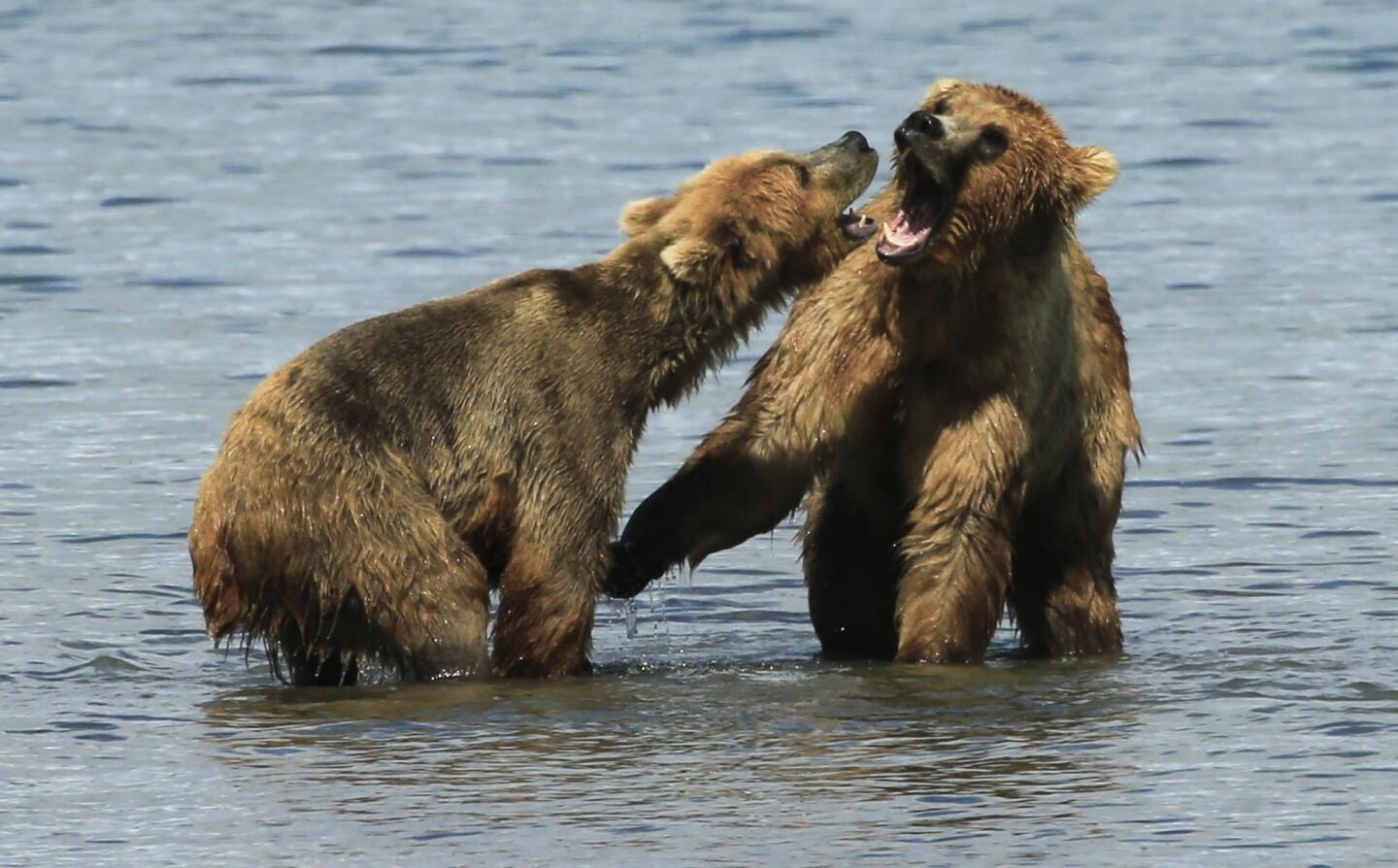
Even though most of their time is taken by hunting and consuming salmon, there is some time for play. (Mark Boster / Los Angeles Times)
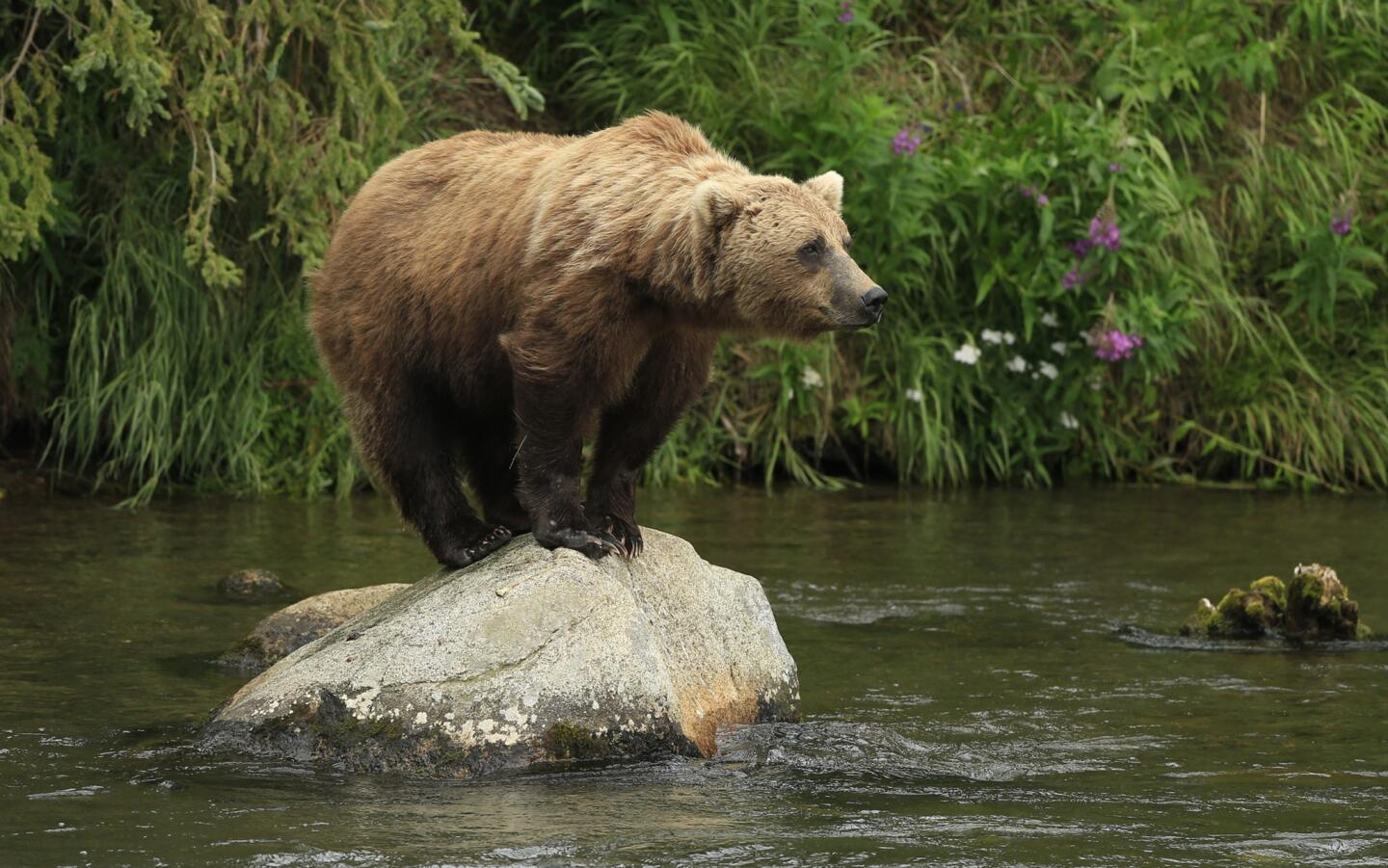
A bear balances on a rock, looking for fish. (Mark Boster / Los Angeles Times)
Advertisement
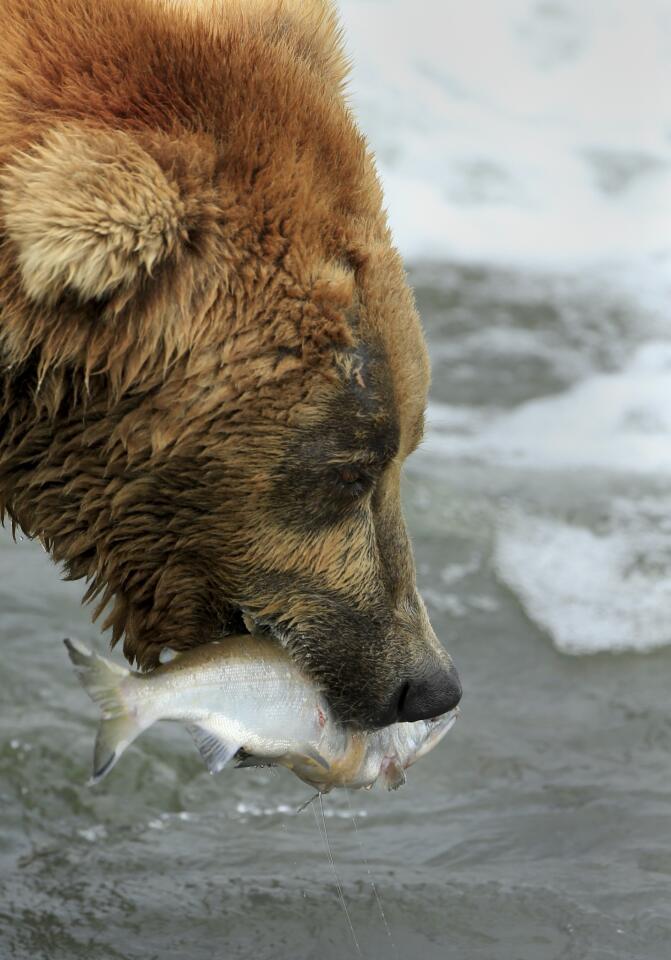
A successful catch. (Mark Boster / Los Angeles Times)
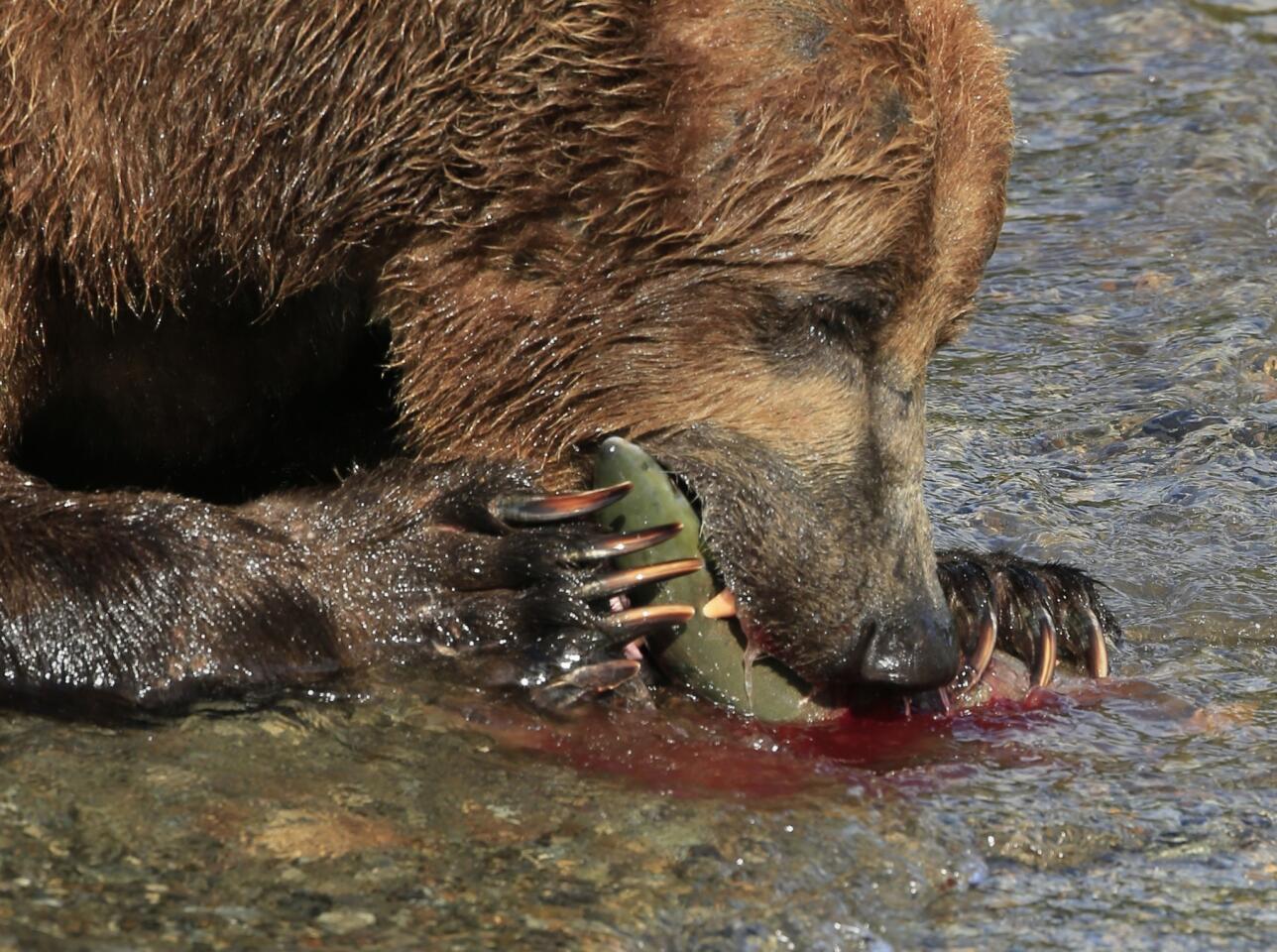
One of the day’s many meals. (Mark Boster / Los Angeles Times)
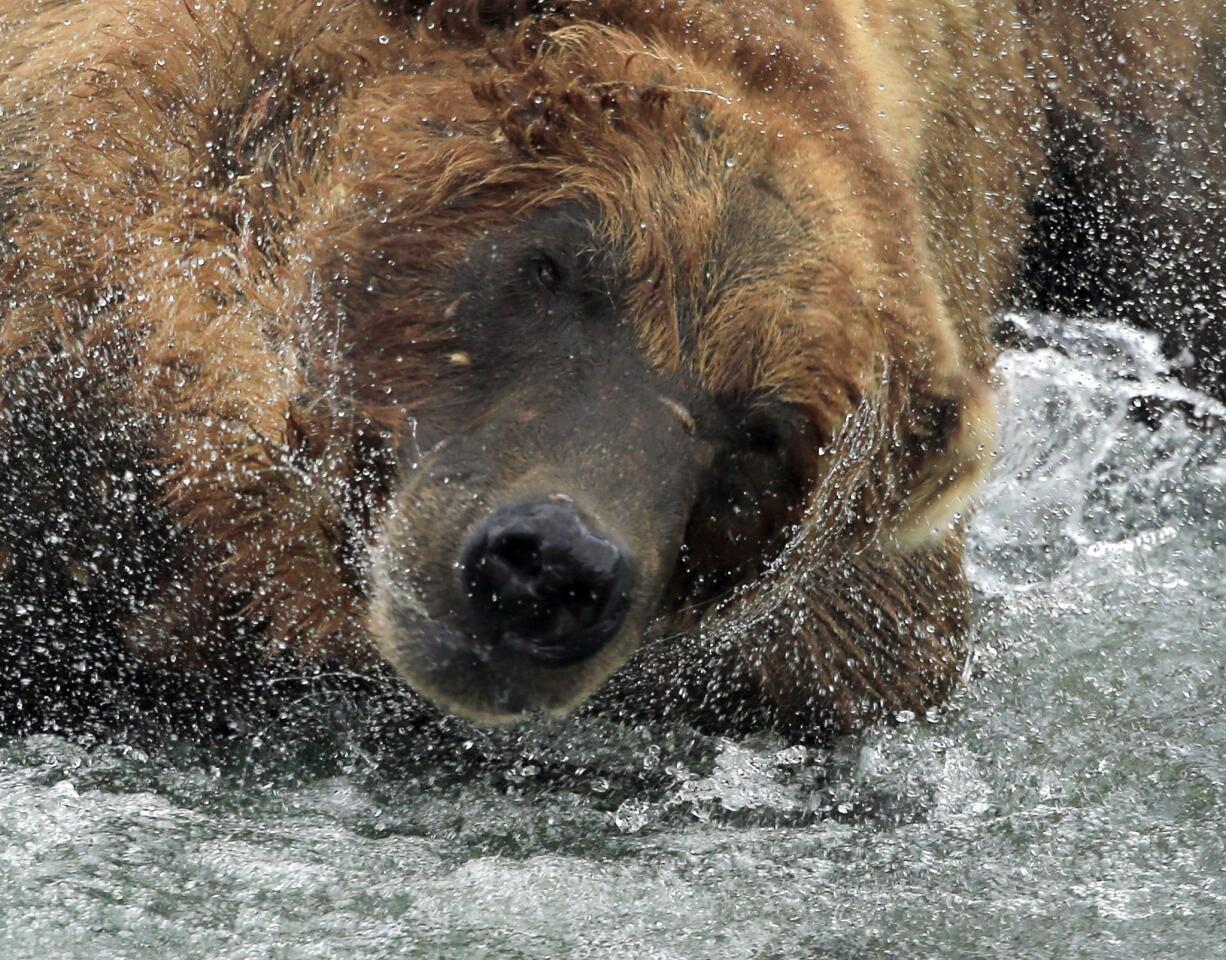
A bear shakes the water off his fur. (Mark Boster / Los Angeles Times)
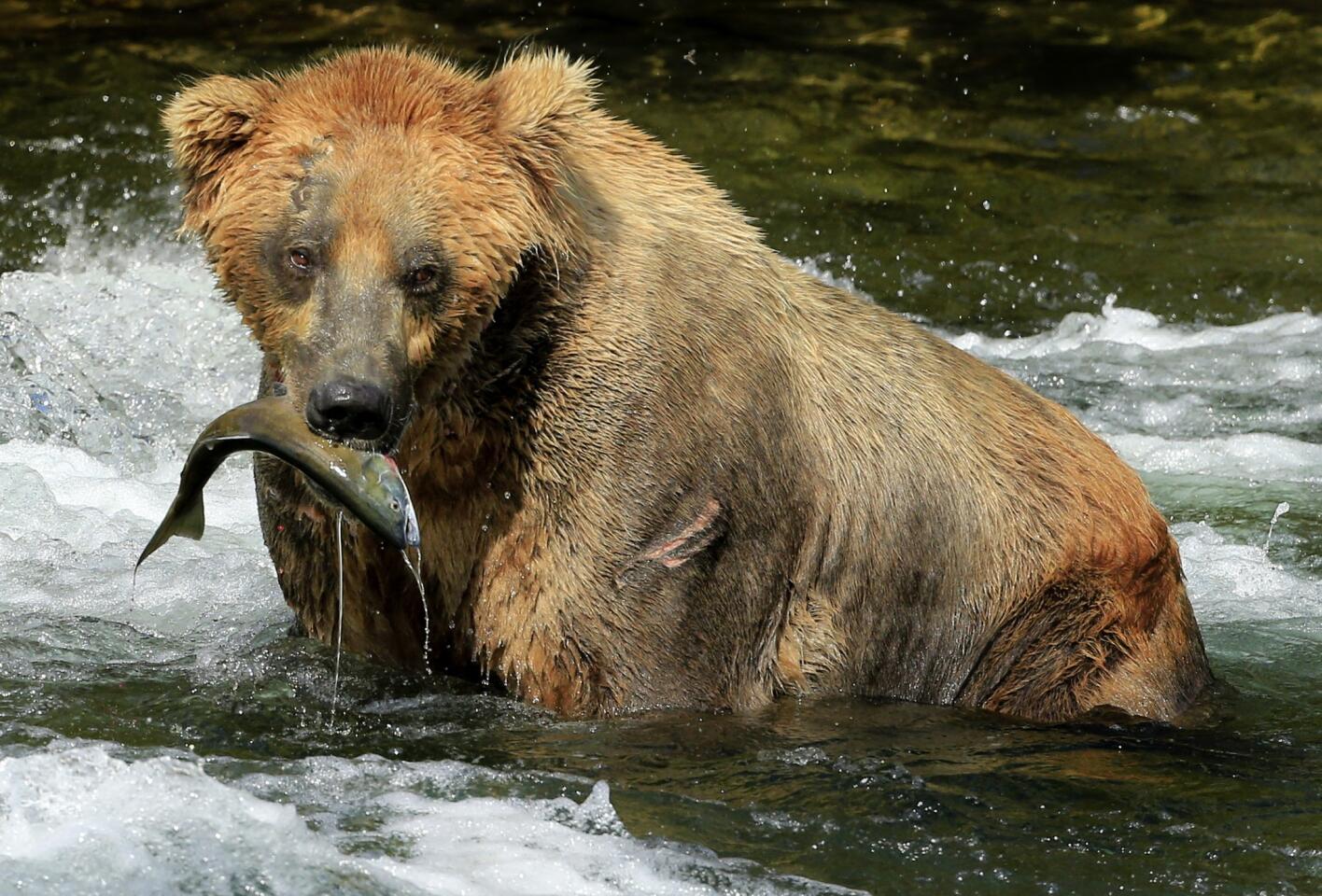
A bear carries a sockeye salmon out of the water at Brooks Falls. (Mark Boster / Los Angeles Times)
Advertisement
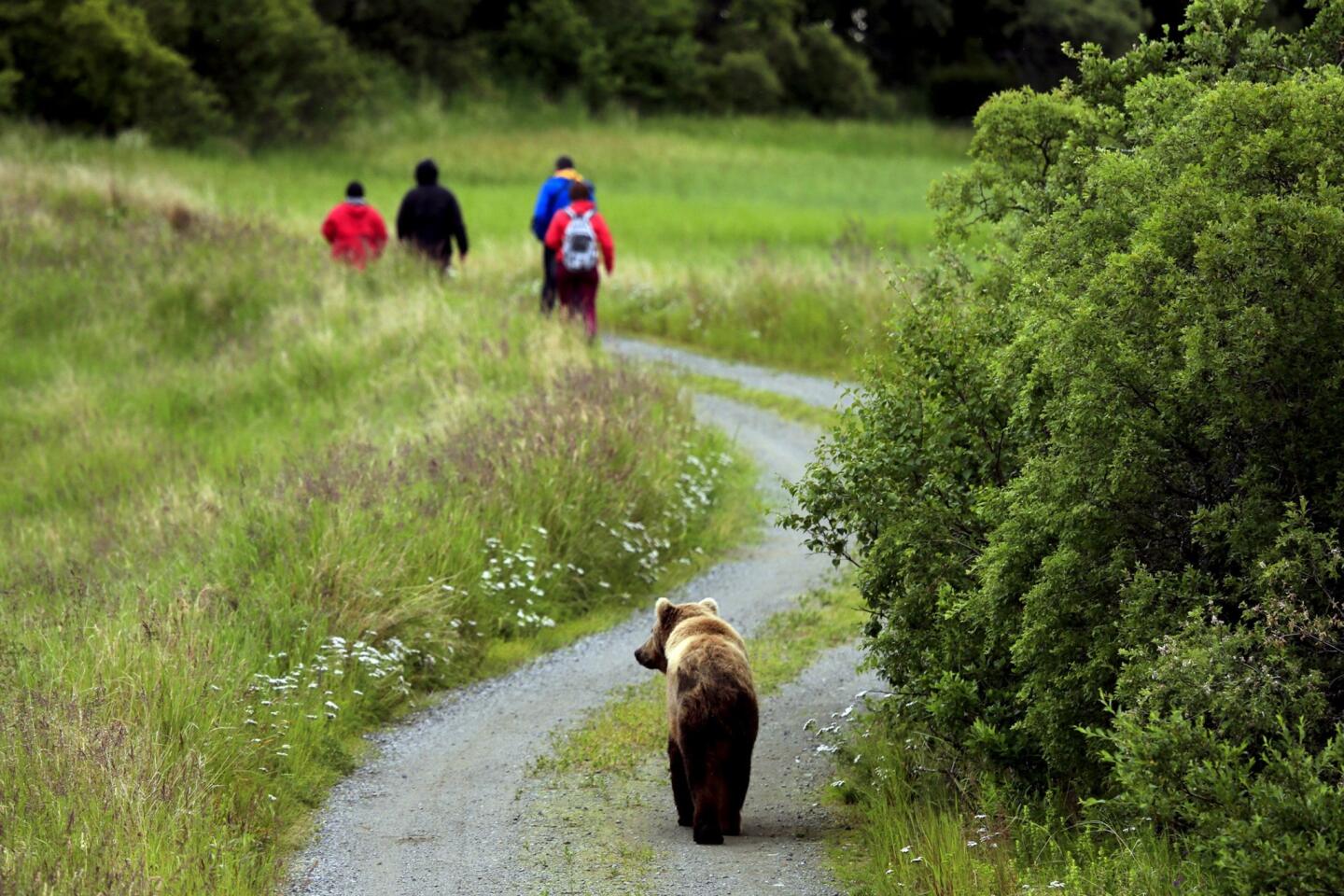
A bear shares a trail with humans. (Mark Boster / Los Angeles Times)
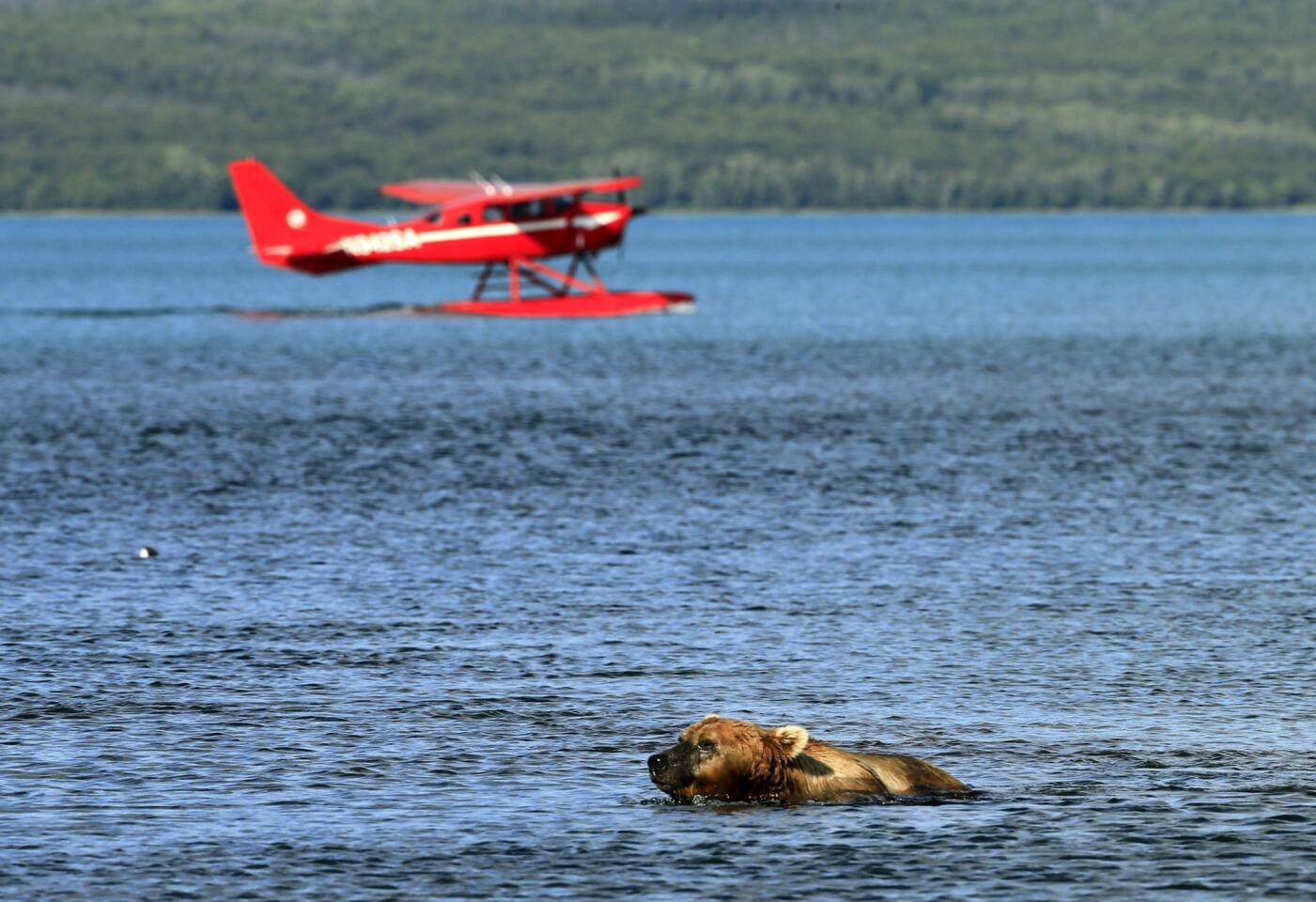
Seaplane pilots have to navigate around bears swimming near the shore of Naknek Lake. (Mark Boster / Los Angeles Times)



